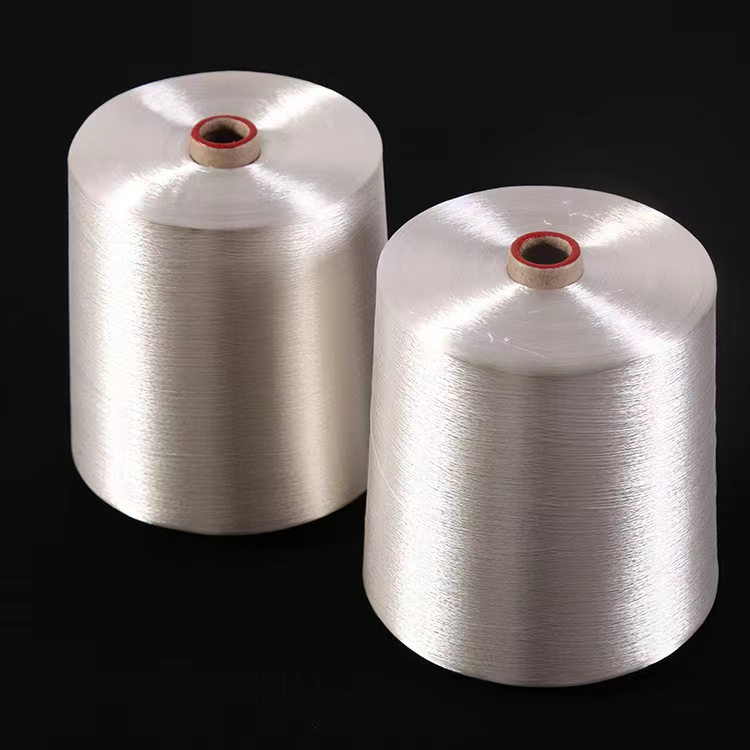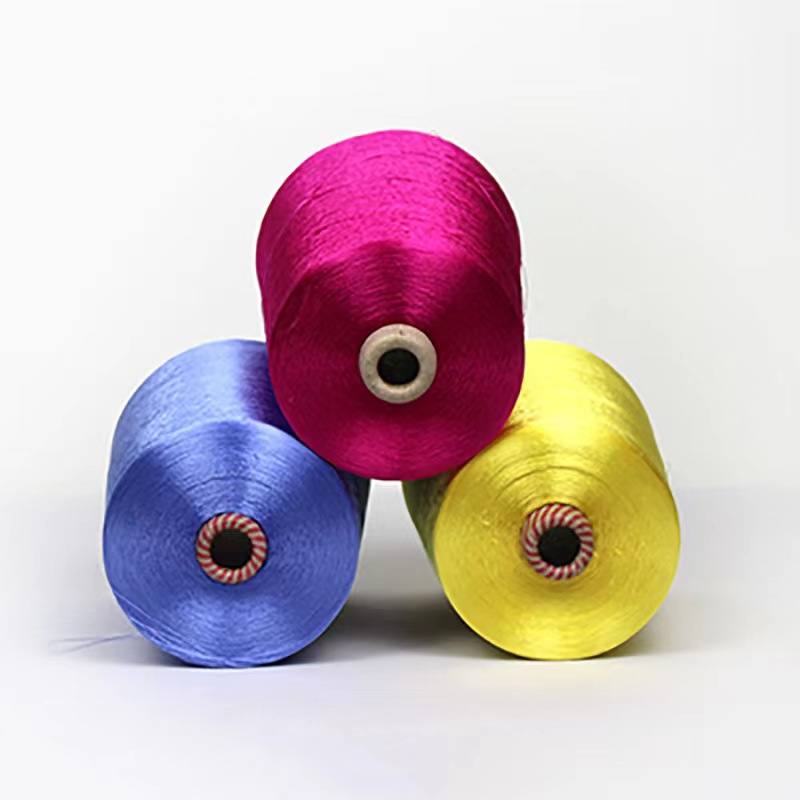Viscose Rayon Fiber Filament Yarn, often referred to as artificial silk, is a regenerated cellulose fiber renowned for its exceptional softness, brilliant luster, and superior moisture absorption. Derived from natural wood pulp through a sophisticated chemical process, this versatile filament yarn seamlessly bridges the gap between natural comfort and synthetic versatility. As a leading specialized viscose rayon filament yarn manufacturer, we are at the forefront of innovating and supplying high-quality yarns that meet the evolving demands of global textiles.
Understanding Viscose Rayon: From Wood Pulp to Luxurious Filament Yarn
The journey of creating Viscose Rayon Fiber Filament Yarn begins with purified cellulose, typically sourced from sustainably managed wood pulp. This cellulose is transformed through the viscose process, which involves treatment with sodium hydroxide and carbon disulfide to create a viscous honey-like solution—giving the fiber its name.
Manufacturing Process
This solution is then extruded through a spinneret into a coagulation bath, forming continuous filaments that are washed, purified, and wound onto cones. The entire process is meticulously controlled to ensure consistent denier, tenacity, and luster.
Sustainable Origins
The primary raw material is wood pulp from renewable sources, making it a bio-based fiber.
Precision Engineering
The spinning process allows for precise control over filament count, cross-sectional shape, and dye affinity.
Key Properties and Material Specifications
The performance of Viscose Rayon Fiber Filament Yarn is defined by a unique set of physical and chemical properties that make it indispensable in textile manufacturing.
Moisture Management
Superior hydrophilicity with 13% moisture regain makes it ideal for activewear and intimate apparel.
Aesthetic Qualities
Innate luster and smooth surface impart a luxurious, silky appearance to fabrics.
Dyeability
Excellent dye absorption allows for deep, vibrant colors with high color fastness.
| Property |
Standard Viscose Filament Yarn |
High Tenacity Viscose Filament Yarn |
| Tenacity (Dry, g/den) |
1.8 - 2.5 |
3.0 - 4.8 |
| Elongation at Break (%) |
16 - 22 |
9 - 16 |
| Moisture Regain (%) |
12.5 - 13.5 |
12.5 - 13.5 |
| Luster |
Bright, Semi-Dull, Dull |
Typically Semi-Dull |
The Application Spectrum: From High Fashion to Technical Textiles
The versatility of Viscose Rayon Fiber Filament Yarn enables its use across an astonishingly diverse range of applications.
Fashion and Apparel
Used in sarees, linings, dresses, scarves, and neckties for its superb drape and luster. Designers value its ability to create flowing garments that hang beautifully on the body while providing superior comfort through moisture management.
Home Textiles
Employed in luxurious bedding, curtains, and upholstery for its soft hand and aesthetic appeal. The fiber's natural properties enhance comfort and visual appeal in home environments.
Technical and Industrial Applications
Specialized high tenacity viscose rayon filament yarn has found significant applications in technical sectors. Its enhanced strength and absorbency make it suitable for tire cord fabrics, medical swabs, and specialty papers.
The yarn's natural cellulose composition provides excellent biodegradability, aligning with growing sustainability demands across industries.
Selecting the Right Viscose Rayon Yarn
Choosing the appropriate Viscose Rayon Fiber Filament Yarn requires careful consideration of technical specifications, intended application, and processing parameters.
Denier and Filament Count
Fine denier yarns (75D-150D) are ideal for lightweight apparel, while heavier deniers (300D+) suit upholstery and industrial applications.
Luster and Aesthetics
Bright luster offers maximum shine for formal wear, while dull luster provides a matte, cotton-like appearance.
Tenacity Requirements
Standard tenacity for regular apparel, high tenacity for technical and industrial applications requiring enhanced strength.
FAQ
What is the difference between viscose rayon staple fiber and filament yarn?
The fundamental difference lies in the fiber structure and length. Viscose Rayon Fiber Filament Yarn consists of continuous filaments that can be kilometers long, resulting in smooth, lustrous fabrics with inherent strength. Viscose staple fiber consists of discrete fibers of predetermined length that are spun into yarns, creating fabrics with a softer, more cotton-like hand.
How does high tenacity viscose rayon filament yarn differ from regular viscose?
High tenacity viscose rayon filament yarn undergoes additional processing and drawing during manufacturing to align the cellulose polymer chains, significantly enhancing its tensile strength and durability. While regular viscose filament yarn typically has a tenacity of 1.8-2.5 g/denier, high tenacity versions achieve 3.0-4.8 g/denier, making them suitable for demanding applications.
Can viscose rayon filament yarn be blended with other fibers?
Yes, Viscose Rayon Fiber Filament Yarn is frequently blended with other fibers to create composite yarns with enhanced properties. A common example is viscose polyester blended yarn, which combines the moisture-wicking comfort and luxurious feel of viscose with the durability, wrinkle resistance, and quick-drying properties of polyester.
What are the proper care instructions for viscose rayon fabrics?
Fabrics made from Viscose Rayon Fiber Filament Yarn require specific care to maintain their appearance and integrity. While generally safe for gentle machine washing or hand washing in cold water with mild detergents, viscose garments should avoid vigorous wringing or twisting. Line drying away from direct sunlight is recommended, while tumble drying should be avoided.
Why is viscose rayon considered a sustainable fiber choice?
Viscose Rayon Fiber Filament Yarn is increasingly regarded as a sustainable option due to its renewable wood pulp origin and biodegradability. Unlike synthetic fibers derived from petroleum, viscose begins with cellulose from sustainably harvested trees or bamboo, making it a bio-based fiber. The fiber's complete biodegradability at end-of-life prevents microplastic pollution.
```








